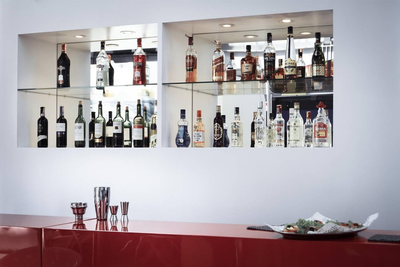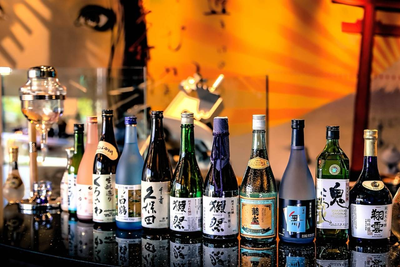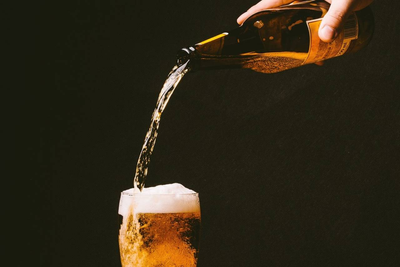What is cost of goods sold?
The cost of goods sold (COGS) is the direct costs attributable to the production of the goods sold in a company. This amount includes the cost of the materials used in creating the goods, the labor costs used to produce the goods and any other direct costs associated with producing the goods. COGS does not include indirect expenses, such as distribution costs and sales force costs.
Why Every Bar Manager Should Know How to Calculate Cost of Goods Sold
What is Cost of Goods Sold (COGS)?

Cost of goods sold (COGS) is the direct cost of producing your business's goods or services. It includes the cost of materials and labor and any other direct expenses related to producing products.
For a bar, COGS would include costs like beer, wine, scotch, mixers, and other ingredients used to make drinks and food. The cost of goods includes the purchase price of the inventory plus any excise taxes, transportation, and storage costs incurred in bringing the inventory to the bar. It would also include the wages of bartenders and other staff directly involved in making and serving drinks and food.
The COGS usually fluctuates based on market conditions and the types of drinks that are popular at any given time. However, the COGS for a bar is typically about 30% of sales. It means that the bar spends about 30 cents in costs for every dollar in sales.
Why is it Important to Calculate Cost of Goods Sold?
The need to calculate COGS has never been felt so urgently than in present times when prices are skyrocketing. Added to this are supply chain troubles and acute labor struggles, both of which have been eating into bar and restaurant margins. By tracking COGS, a business can take steps to control costs and make better decisions for the company that are driven by data.
The cost of goods sold is one of the most important metrics that give bars and restaurants an insight into how much revenue they generate from product sales. This number can be used to monitor trends and make necessary operational adjustments to improve the profit margin.
There are some of the reasons why bars must calculate cost of goods sold (COGS)-
- To determine how much money to set aside for monthly inventory.
- To figure out the percentage markup for drink prices.
- To track trends and see which items are selling well and which ones aren't moving, so the inventory can be adjusted accordingly.
- To get an idea of the total monthly expenses, one can make informed decisions about where to cut costs.
- To keep tabs on profitability and ensure that the business is sustainable in the long run. Calculating COGS is necessary to prepare financial statements like Profit & Loss (P&L) reports, which can be used to track business performance over time and identify areas of improvement.
- Many tax agencies require businesses to report their COGS as part of their annual tax filings, so it's important to maintain accurate records throughout the year.

Control alcohol inventory costs with an easy to use bar management software.
Try a free download now.
How to Calculate Cost of Goods Sold at a Bar
Bars typically have a high cost of goods sold (COGS) percentage, meaning that a large portion of each sale goes toward the cost of the ingredients used in the drinks. For example, if a drink costs $5 to make and is sold for $10, the COGS percentage would be 50%.
Bar managers need to know how to calculate Cost of Goods Sold because it directly impacts the bottom line. The higher the COGS percentage, the lower the profit margin. So, if bar managers want to increase profits, they need to find ways to either increase prices or decrease the cost of their ingredients.
There are two main ways to calculate COGS- the direct purchase method and the physical (or average) inventory method.
The direct purchase method is slightly more complicated as it requires tracking every purchase made during the period and then adding up those costs. It can be done electronically through invoices or manually through receipts.
The physical inventory method, also the most common method to calculate cost of goods sold, involves taking an inventory count of all the products at the beginning and comparing it to the end-of-period inventory. It allows a manager to see how much inventory was used during a particular period and then tally up those costs.
Calculating Cost of Goods Sold With an Example
To find the average inventory, add up the value of your beginning inventory for the period + the value of your ending inventory for the period and divide by two. Then, subtract that number from your cost of goods manufactured (COGM) for the period. The COGM includes all direct materials, direct labor, and business overhead costs incurred while making a menu item, whether drinks or food.
Here's an example- Let's say your beginning inventory was $10,000, and your ending inventory was $12,000. Your average inventory would be ($10,000 + $12,000)/2 = $11,000. If your COGM was $15,000 for the period, then your COGS would be $15,000 - $11,000 = $4,000.
Spreadsheets Vs. Software

As mentioned above, there are a couple of ways to calculate COGS. The most common is to use spreadsheets. While spreadsheet-based COGS calculations can be result-oriented, they can also be time-consuming and challenging to keep up-to-date.
Here are a few factors one should consider when using spreadsheets to calculate cost of goods sold (COGS)-
- Spreadsheets are prone to error, since they require managers to enter figures manually; even a small error can impact the COGS calculation.
- Spreadsheets are time-consuming to update and maintain, so you may be unable to get an accurate COGS number on a timely basis.
- Spreadsheets don't provide real-time details to manage your inventory and costs.
While inventory software systems may require an upfront investment, they can save time and money in the long run by making it easier to monitor costs and inventory levels and stay profitable.
How to Reduce Your Operating Expenses
Running a bar or restaurant is expensive. But small measures undertaken can start showing significant results over time. There are several ways for business owners to reduce operating costs. It begins with reducing waste -- avoid over-ordering, use portion control measures, and properly store all perishables. But there are many other methods to implement. Here are some of them-
- Review your inventory regularly and eliminate anything that doesn't sell. It will help free up storage space and reduce the amount of money spent on inventory just sitting around.
- Take advantage of wholesale prices when possible. Buying in bulk can save you a lot of money, so it's worth looking into this option for things like alcohol, glassware, and non-perishable supplies.
- Negotiate better deals with suppliers. If you have a good relationship with your suppliers, they may be willing to give you discounts or extended payment terms to help improve your cash flow.
- Reduce energy costs by ensuring all appliances are turned off when not in use and invest in energy-efficient lighting. These small changes can make a big difference in your monthly electricity bill.
- Implementing a customer loyalty program is an excellent way to encourage repeat business while collecting valuable data about your customers' buying habits.
- Review your business's operating expenses and identify areas where you can make cuts. The process may include renegotiating contracts with suppliers, downsizing your space, or reducing staff hours. Lowering labor costs can also be done by scheduling employee shifts more efficiently and utilizing automation where possible.
- Make a budget and stick to it. It will help you keep track of your spending and ensure that you are only spending money on necessary items.
- Take advantage of technology to automate tasks and reduce labor costs. For example, use a POS system and inventory management software to streamline ordering and inventory management.
- Finally, cutting back on marketing and advertising expenses can help you retain extra cash.
- Finally, calculating the cost of goods sold (COGS) regularly allows a business owner to track inventory accurately and determine their profit percentage. When one knows the difference between total revenue and total expenses, one can review pricing strategies and make informed business decisions.
Conclusion

Running a business is back-breaking work. Too many factors need to be managed and monitored. And when it's a business that involves perishables, like a restaurant or bar, it gets trickier.
When operating a bar, it's important for the operator to keep a well-stocked liquor cabinet. This means having a variety of alcohols, mixers, and garnishes on hand at all times. However, stocking a bar is only the first step; bartenders also need to know how to make drinks quickly and efficiently. In addition, knowledge about your products is very important. One should know popular brands and unpopular ones, while keeping up with ever-changing trends.
Once all of this is out of the way, it is important to have a handle on the cost of goods sold. It is an important metric for bar owners and operators to get an insight into the sale of menu items and generate the profit percentage. This information is vital for deciding what to keep on the menu and what to phase out. Additionally, tracking the cost of goods sold can help flag issues with waste or theft -- dramatic spikes or dips in this number can indicate these problems.
